By Alyssa Bueno
Most people think of the new year as a fresh start, a new beginning. But that’s far from true when it comes to our environment. We don’t get a new planet.
2019 nearly marks the halfway point for when the Sustainable Development Goals (SDGs) are expected to be achieved. These 17 goals set forth by the United Nations are aimed at mitigating climate change to improve global human welfare. In order to meet these goals, we need to track our current progress.
Well, 2018 marked a record high for carbon emissions worldwide. A report from the Rhodium Group found that emissions grew by 3.4% this year, after an increase of 1.6% in 2017. This means that not only are carbon emissions accumulating, but they are being released at a faster rate. Moreover, Intergovernmental Panel on Climate Change (“IPCC”) released a dire report warning of imminent climate catastrophe unless policymakers across all nations cut emissions in half by 2045.
Despite (or in response to) these ominous findings, 2018 set the stage for major climate policy reform. A number of states in the US passed progressive environmental legislation, specifically aiming to be carbon neutral. Governor Brown set the most ambitious climate target in history by issuing an executive order to make California carbon neutral by 2045. Governor Cuomo of New York announced his goal for electricity to be 100% carbon neutral by 2040.
Similarly, countries across the world have made the pledge to be carbon neutral by 2050. 19 countries and 32 cities including Canada, Denmark, Spain, the UK, and the Marshall Islands joined the Carbon Neutrality Coalition. This group aims to use strategies and goals set forth by the Paris Agreement to achieve net zero carbon emissions and deliver on the SDGs. Starting in 2019, the next ten years will be a crucial time to make major headway on these goals.
The SDGs recognize that solving climate change and ending poverty and other deprivations go hand-in-hand. Luckily, it is possible for nations, businesses, and individuals to take action in achieving the SDGs and fight climate change.
As we know, climate change is the result of anthropogenic emissions being released into the atmosphere. By reforesting previously degraded ecosystems and switching out fossil-fuel dependent technologies, we can reduce our carbon footprint and begin absorbing carbon through natural processes.
Economists favor carbon pricing policies, such as California’s carbon market, as the best way to reduce carbon emissions and spur sustainable development. The goal is that businesses are now incentivized to finance environmental projects that restore ecosystems or use renewable energy. This works because trading emissions permits across companies tends to be costly, companies generally opt to fund carbon offset projects to reduce their own net emissions. This year, California met their emissions goals years ahead of schedule. The state decreased carbon pollution by 13% below 2004 levels while maintaining significant economic growth of 26%.
Both the mandatory and voluntary carbon markets are key in reducing emissions. In 2018, companies, governments, and individuals purchased a record high of carbon credits resulting in 42.8Mt of CO2e being retired.
Regardless of state policies, by purchasing carbon credits, countries, states, and individuals can also neutralize their own annual carbon footprint. The funding goes to verified environmental projects that work explicitly to remove, reduce, or avoid greenhouse gases in the atmosphere. Certified carbon offset projects work hard to become verified under the UN Gold Standard, Verified Carbon Standard, and the Climate, Community, and Biodiversity Alliance. Additionally, projects also have a number of co-benefits that work to reduce poverty, promote education, improve health, among other beneficial outcomes. As a group, these outcomes achieve all 17 SDGs and should be highly valued as a key solution to the 2030 targets.
At the end of the day, we can’t achieve the economic and social goals we’ve set for ourselves without first addressing the underlying issue: climate change. If carbon offsets can help accomplish our goals without major economic upheaval and improve social and sustainable development, then it’s a win-win for everyone.


Carbon Credit Capital, LLC
561 Broadway Suite 6A New York NY 10012
Monday – Friday 9:30 AM – 5:30 PM
© Carbon Credit Capital, LLC. 2024 All rights reserved.